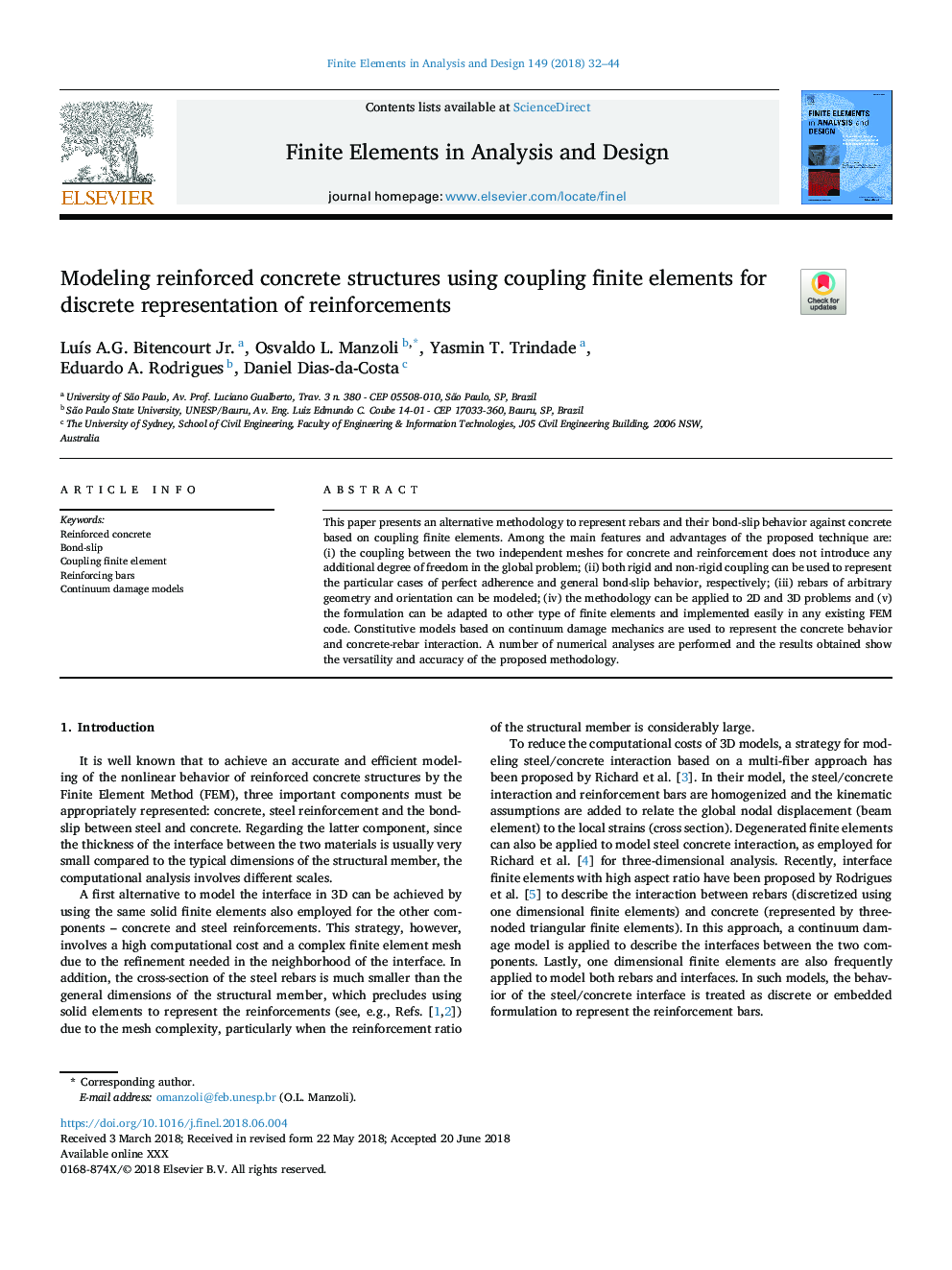| Article ID | Journal | Published Year | Pages | File Type |
|---|---|---|---|---|
| 6925222 | Finite Elements in Analysis and Design | 2018 | 13 Pages |
Abstract
This paper presents an alternative methodology to represent rebars and their bond-slip behavior against concrete based on coupling finite elements. Among the main features and advantages of the proposed technique are: (i) the coupling between the two independent meshes for concrete and reinforcement does not introduce any additional degree of freedom in the global problem; (ii) both rigid and non-rigid coupling can be used to represent the particular cases of perfect adherence and general bond-slip behavior, respectively; (iii) rebars of arbitrary geometry and orientation can be modeled; (iv) the methodology can be applied to 2D and 3D problems and (v) the formulation can be adapted to other type of finite elements and implemented easily in any existing FEM code. Constitutive models based on continuum damage mechanics are used to represent the concrete behavior and concrete-rebar interaction. A number of numerical analyses are performed and the results obtained show the versatility and accuracy of the proposed methodology.
Related Topics
Physical Sciences and Engineering
Computer Science
Computer Science Applications
Authors
LuÃs A.G. Jr., Osvaldo L. Manzoli, Yasmin T. Trindade, Eduardo A. Rodrigues, Daniel Dias-da-Costa,
